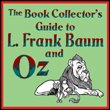|
|
|


<<< Continued from previous page
- LOWER PRICES ON APPLICABLE INVENTORY TO $24.99. Doing this will put your books in the lower fee bracket of $.05 - that is, cut fees in half. Approximately, I think this should apply to books you have priced in the $25 to $35 range. Several distinctions: If you're a multiple-venue seller, it would make more sense to lower prices on books you now have priced between $25 and, say, $30 because your inventory still has exposure on other venues - in other words, the likelihood of moving your books is, generally speaking, greater than it is for eBay's one-venue sellers selling the same items. Dedicated eBay sellers, on the other hand, should strongly consider adjusting most if not all of their applicable $25 - $35 inventory to $24.99. Exceptions would be titles that are mostly likely to sell soon.
- USE THE "BEST OFFER" OPTION. If you suspect that ANY of your books might be priced too high to move quickly, consider using the "Best Offer" option. This will speed sales, and yet you'll retain the choice not to accept a lower price.
- ELIMINATE STORE ITEMS THAT HAVE PROVEN HISTORIES OF COLLECTING DUST. Literally. If you don't know how long you've had a given book listed, run your finger along the top edge of the text block and inspect it for dust. If you have books that have already sat and sat in your store, either slash prices or kick them out.
- ELIMINATE LOW-PRICED INVENTORY. This is related to #5. It's no longer going to make sense to populate your store with low-priced books unless you can get them sold quickly, and you'll have to be very focused now on assessing how fast new inventory is likely to move. For those needing assistance with this "computation," issue #28 of the Gold Edition offers some suggestions.
- CONVERT SOME ITEMS TO AUCTIONS. I have a bad habit sometimes of listing plainly eBayable books on fixed-priced venues simply because I don't have the time - and sometimes it's because I just don't feel like it - to create upgraded presentations for eBay auctions. Go through your inventory and see if you've done the same thing. You might discover that you own a number of books whose values could be maximized in auctions.
- CONVERT TO 30-DAY LISTINGS AND ROTATE INVENTORY. This applies only to those of you who currently use the "Good 'Til Cancelled" option. Let's say that you have 1,000 items in your store. If you remove 500 of them and convert the rest to 30-day listings, you can let them expire after 30 days and re-list the first 500 - and repeat the cycle continuously. This instantly cuts your store fees in half and
still gives all of your books substantial exposure. Also, putting something aside for a month and
re-listing it can have a financially beneficial freshening effect.
- MOVE SOME ITEMS TO HALF.COM. It's easy to do. Go
here.
This is a great alternative for eBay-only sellers who need to dump low-priced inventories from their stores. It costs you nothing to list at Half, and, though sales won't be as brisk as they were in your store, at least you'll get some activity. If you aren't already multi-listing on major fixed-price venues, it might be time to make the move.
- GROUP RELATED STORE ITEMS INTO LOTS AND LIST AS AUCTIONS.
If you have a large store, there are doubtless many books you could group into lots and move quickly.
For more information on this strategy see issue #23 of the Gold Edition.
- UPGRADE YOUR LISTINGS. If you're using stores as an added venue for books that you also list on other venues - that is, if your presentations are plain vanilla - consider adding a photograph and/or some textual content to them.
- LIST IN ALL FORMATS. If you've previously been listing items in your store only, consider listing some of them as auctions and/or fixed price items (which receive considerably more exposure in searches). This will help drive more traffic to your store.
- OPTIMIZE YOUR STORE SETUP. Upgrade the appearance and operation
of your store. Take advantage of the following options: cross promotion, item display, promotion boxes,
and custom listing frames - and consider buying eBay keywords to drive off-site traffic to your store.
Additionally, if you have an off-site presence that you can use to drive traffic to your store, you
may qualify for a kickback in fees. IMPORTANT: If you haven't activated your listing feeds, do
it. And a general piece of advice: Start branding your store!
There's more information on utilizing these options
here.
- RAISE YOUR SHIPPING CHARGES. If you've been
charging $2 or $3 for shipping store items, bump it up
a buck. That gives you 10 to 20 free months of listing
for something that won't likely give your buyers
pause.
Finally ...
- SELL BETTER BOOKS. The booksellers most adversely affected by this fee increase and, for that matter, many other annoying, nickel-and-dime increases venues make from time to time, are those who sell at the low end. These sellers are doubly hurt by this recent increase because competition continues to heat up in the $10-and-under sector of the market and most are experiencing fewer profitable sales. However, here's a central bookselling truth: So many problems fade into near extinction once you begin to look for and sell better books. If you don't, almost every single negative change in the marketplace will be magnified in your business. Also, in the long run, it isn't just a matter of selling better books; it's important to continuously upgrade your inventories. Sell even better books next year. Even better the next. What this enables you to do is not only stay ahead of fee increases, etc., but also enjoy an increase in net income - and not feel as inclined to vent on forums every time, for example, USPS raises their Media Mail rates.
If you have any additional suggestions, I'd like to hear them. Write me at
editor@bookthink.com
Meanwhile, hang in there!
|
|







|
|












|


